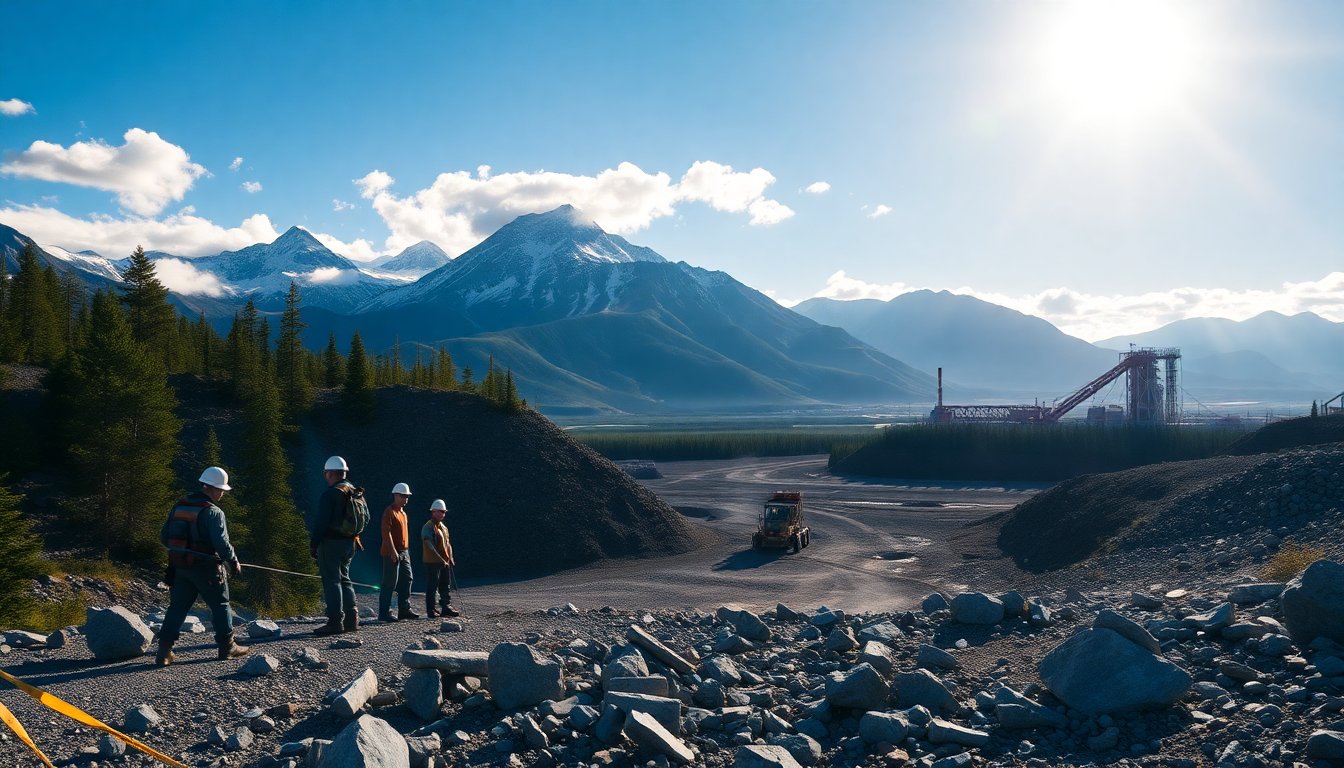Table of Contents
Alaska’s mining industry is undergoing a significant transformation. The focus has shifted towards rare earth elements, which have become central in the trade disputes between the United States and China. Once regarded as mining byproducts, these minerals are now highly sought after, reflecting changes in economic priorities and global supply chains.
The emergence of a new mineral focus
Traditionally, Alaska has been known for gold extraction. However, recent trends show a growing interest in these newly valuable elements. Amid the U.S.-China trade tensions, the demand for rare earth minerals has increased, highlighting their essential role in modern technology.
These materials are crucial for manufacturing electronics and renewable energy systems, now viewed as strategic assets.
The facts
The perception of valuable minerals is changing. Rare earth elements, often found with gold deposits, were previously considered mining detritus. However, technological advancements and shifts in global trade dynamics have redefined their importance.
They are now crucial for industries including defense technology and clean energy solutions. This evolution has led mining companies to reassess operations and explore new extraction techniques to maximize yields.
The consequences
This shift in perspective has significant implications for the mining sector.
Companies are investing in research and development to improve extraction methods. As demand for rare earth elements rises, their value increases, creating economic opportunities. Moreover, this trend highlights the growing importance of sustainability in mining practices, prompting firms to adopt environmentally-friendly techniques.
Geopolitical implications and mining strategies
The U.S.-China trade tensions have far-reaching effects beyond the economy, impacting national security and technological progress. In response, the United States is working to decrease its reliance on foreign sources of rare earth elements.
Alaska, known for its abundant geological resources, is positioned to play a crucial role in this initiative. The state government is now enacting policies to attract investment in mining operations that focus on these essential minerals.
The facts
The Alaskan government is actively pursuing partnerships with private companies to enhance extraction techniques for rare earth minerals. Investments are focused on innovative practices, particularly environmentally sustainable mining, to reduce ecological impact while increasing profitability. These efforts aim to stimulate local economies and establish Alaska’s role in the global supply chain for these critical resources.
The consequences
By prioritizing sustainable mining practices, Alaska seeks to balance economic growth with environmental responsibility. This approach is expected to attract further investments and bolster job creation in the region. As a result, Alaska may become a significant contributor to the global supply of rare earth minerals, which are essential for various high-tech industries.
The challenges
Here are the facts: the transition to mining rare earth elements in Alaska faces significant challenges. Regulatory hurdles and environmental concerns complicate development. Additionally, the need for new infrastructure adds to the obstacles. The volatility of global markets for these minerals introduces uncertainty in investment returns. A coordinated approach from state authorities, mining companies, and local communities is essential to address these issues.
Current developments
Alaska’s mining landscape is undergoing a transformation as it shifts towards the extraction of rare earth elements. This change reflects evolving economic realities and underscores the necessity for adaptability amid geopolitical challenges. The increasing demand for these minerals positions Alaska to potentially become a key player in the global supply chain, influencing the future of its mining industry.





